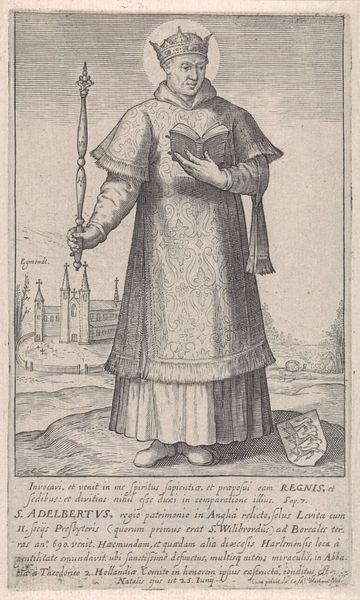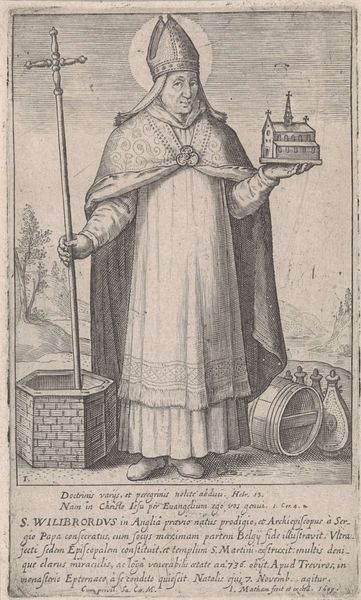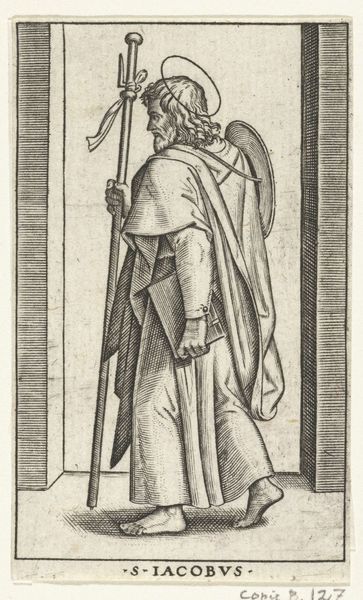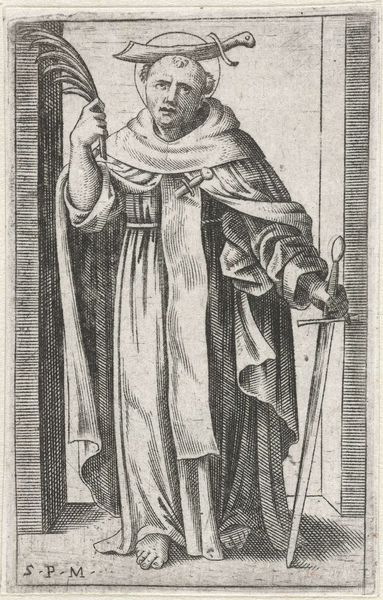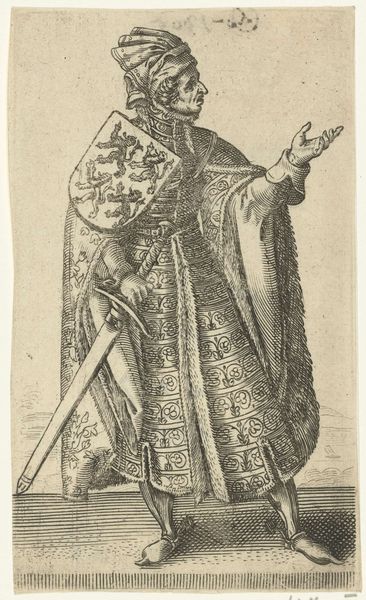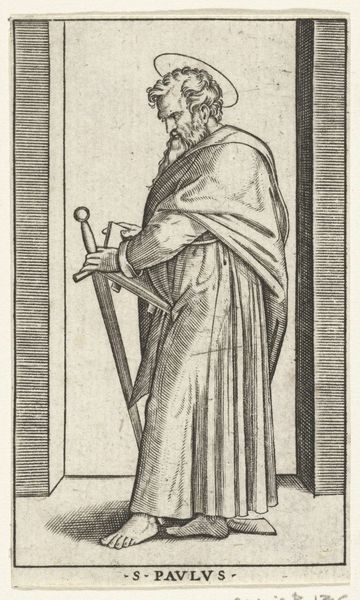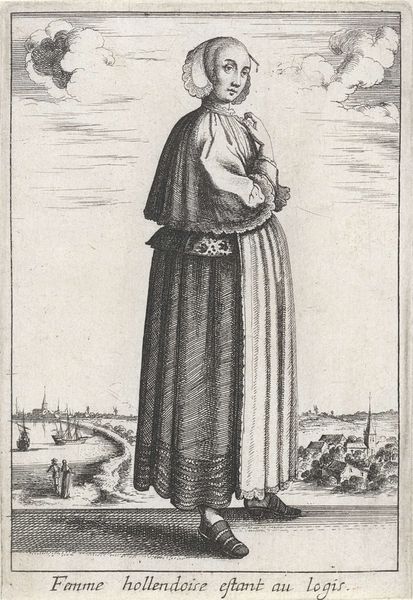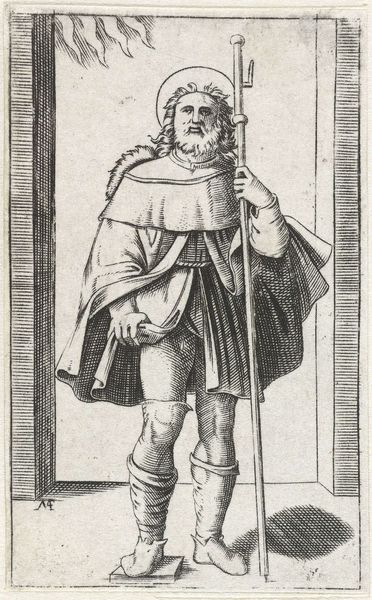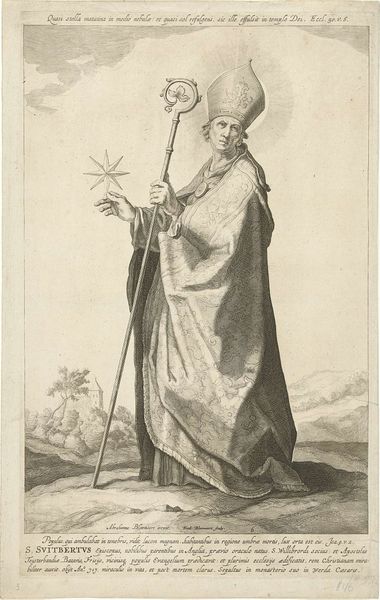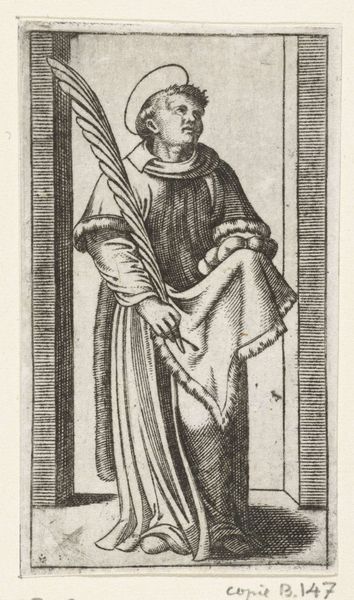
print, engraving
#
portrait
#
baroque
# print
#
history-painting
#
engraving
Dimensions: height 144 mm, width 84 mm
Copyright: Rijks Museum: Open Domain
Curator: This print, dating from around 1607 to 1611, by Jacob Matham, portrays H. Engelmundus van Engeland, also known as Saint Engelmundus. It’s an engraving, currently housed here at the Rijksmuseum. Editor: My first impression is a quiet sense of authority, maybe even somberness. The saint is rendered with incredible detail; his garments and facial expression feel carefully considered, but the composition gives the figure an overwhelming prominence, minimizing the importance of the landscape in the background. Curator: That's a keen observation. Matham’s style often leaned toward Baroque sensibilities. It served a purpose for the Counter-Reformation’s objectives of re-embracing of imagery with both overt sentimentality and theological rigor. Note the halo: Saint Engelmundus holds the book that underscores both faith and scholarship, set against this architectural context. How do you view these embedded signs of church power? Editor: Well, knowing this was created during a time of significant religious tension in Europe, particularly between Catholicism and Protestantism, does recast how I view its intended public role. The depiction of Saint Engelmundus reinforces established power dynamics. However, looking at the visual language here, I consider if the level of ornateness is meant to impress upon viewers not only faith in established religion but a sort of cultural sophistication associated with Catholicism. Curator: Indeed, the figure of the saint presented as not merely a figure of devotion but as a representative of English spiritual identity as ordained through Rome. And I wonder, too, how the relatively minimized church, the smallness of the structure against his large, looming figure, speaks to an ambivalence surrounding architectural, institutional strength versus a personalized experience. Editor: I hadn't considered that angle, but it speaks to this broader understanding of Matham's print, about understanding what visual symbols, like size, communicates, it can challenge even fixed historical understandings. Curator: It all becomes deeply enmeshed within the socio-political environment in which the print was both created and interpreted, it's a layered conversation we are only beginning to expose here. Editor: Right, an intricate intersection that still resonates through time, forcing us to engage in contemporary discussions around identity, faith, and politics in an image.
Comments
No comments
Be the first to comment and join the conversation on the ultimate creative platform.
